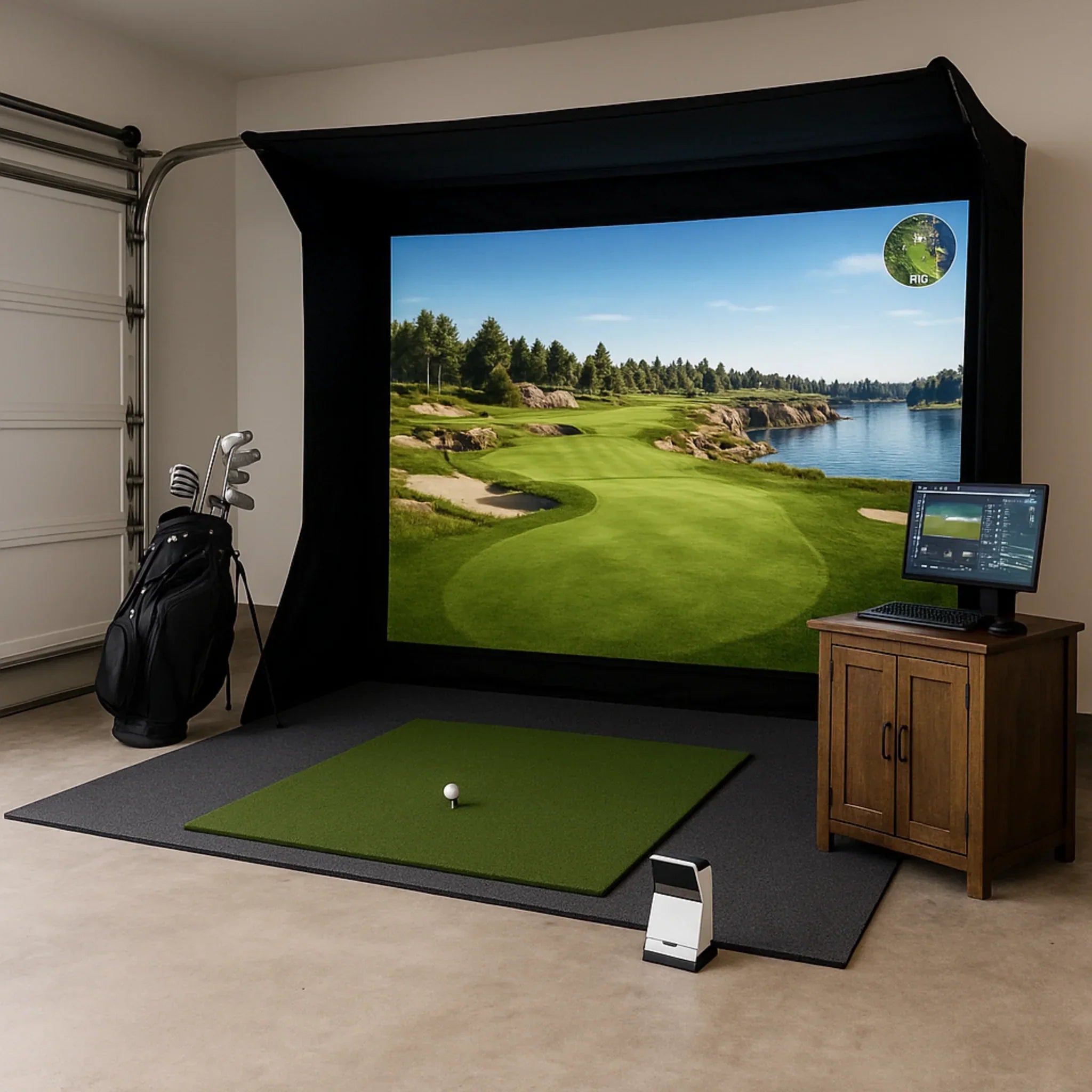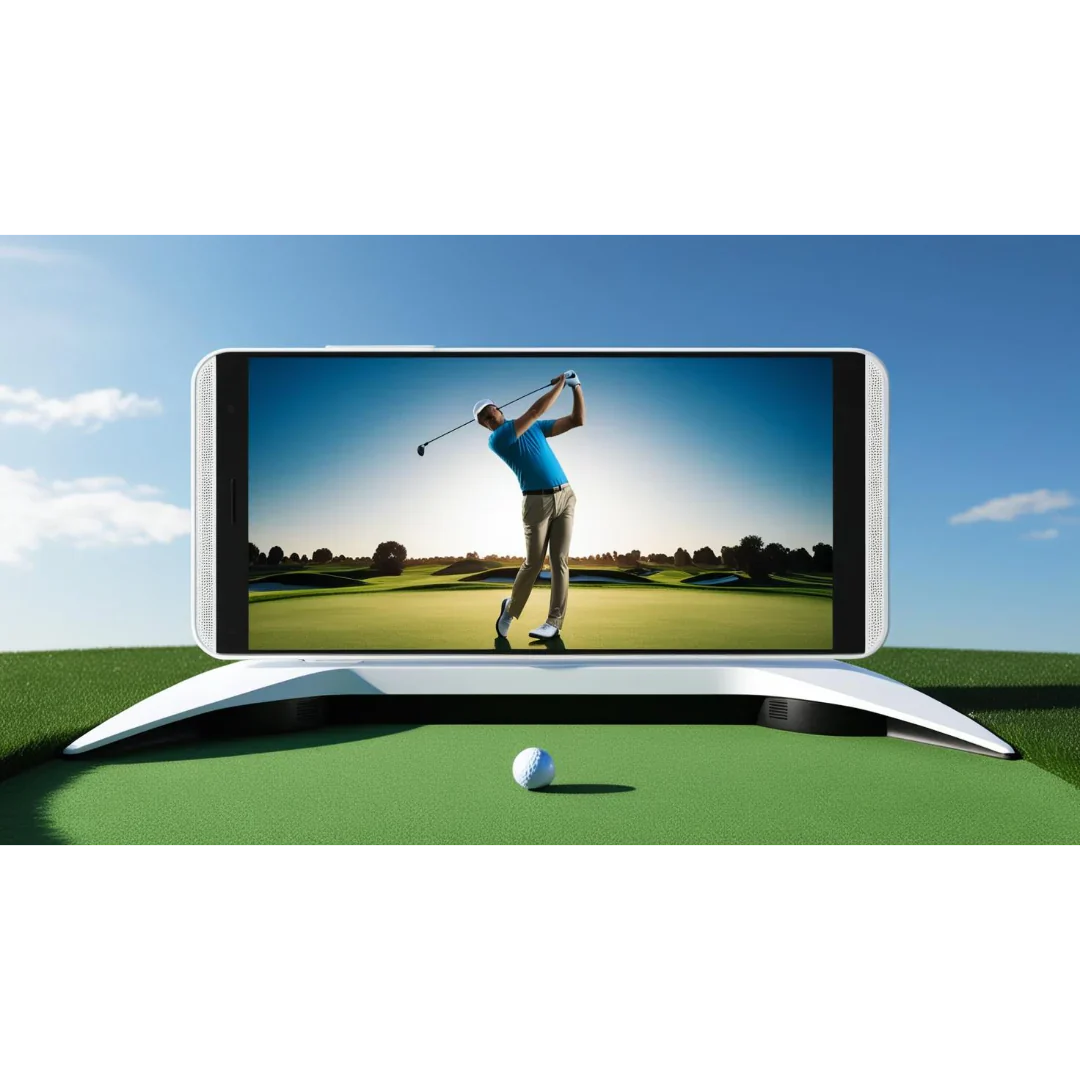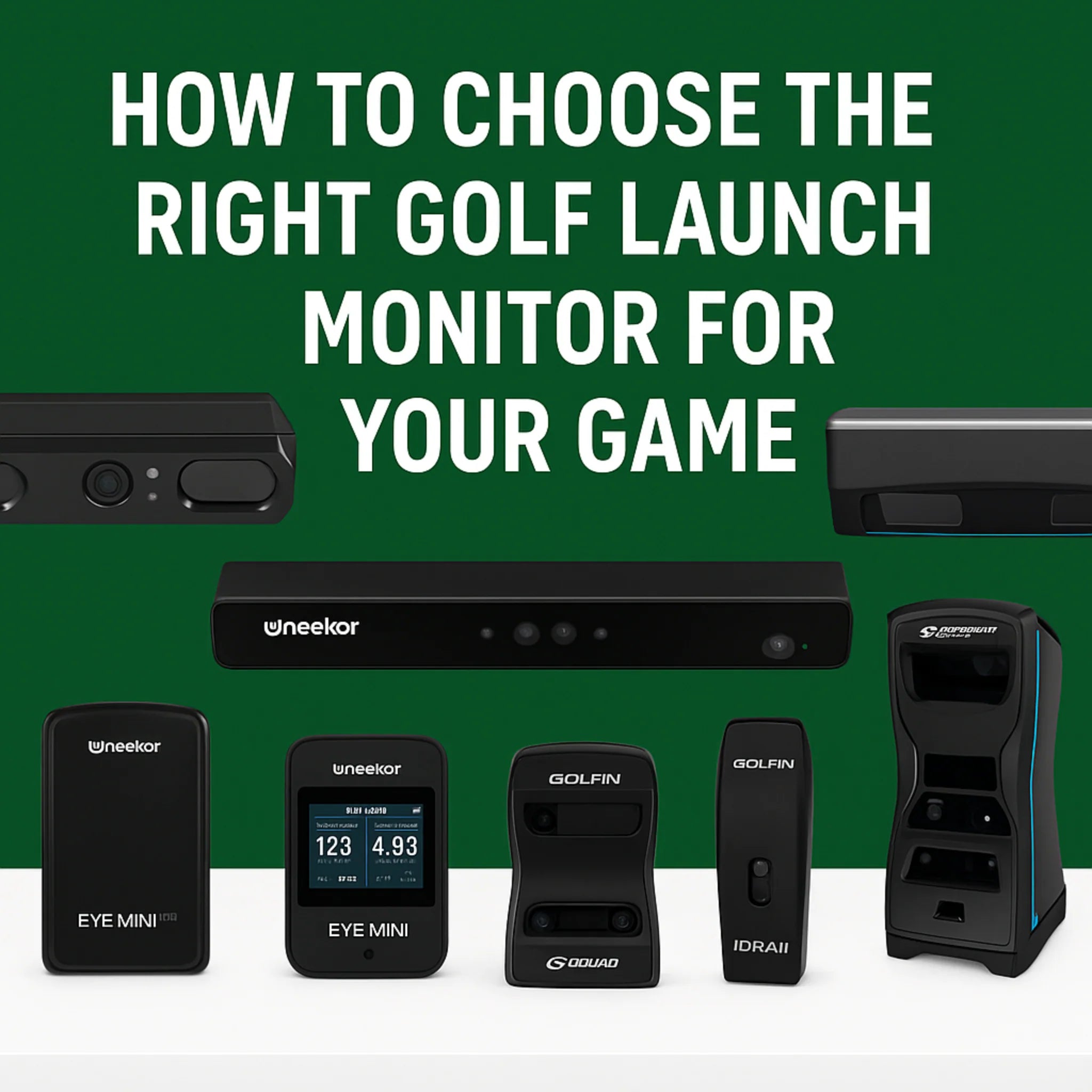
The Ultimate Guide to Building a Golf Simulator in Your Garage
Why Build a Golf Simulator in Your Garage?
A garage-based golf simulator is the perfect way to play, practice, and improve your swing year-round, rain, snow, or shine. It’s a private, convenient, and cost-effective alternative to traveling to a course or indoor golf facility.
Minimum Space Requirements
Before you buy, check your garage dimensions. A comfortable setup typically needs:
-
Width: 10–12 feet (to swing freely)
-
Height: 9–10 feet (for full driver swings)
-
Depth: 15–20 feet (to fit screen + tee distance)
Tip: Always test your swing clearance with a driver before committing.
What You’ll Need:
1. Launch Monitor
This is the brain of your simulator. Top choices:
A ceiling-mounted, photometric launch monitor offering incredibly detailed club and ball data. Ideal for permanent indoor simulator setups with full swing analysis.
An upgrade to the EYE XO with a wider hitting zone and enhanced multi-angle photometric tracking. Designed for elite indoor performance and multi-user setups.
A portable launch monitor with the same tracking power as Uneekor’s overhead units. Perfect for golfers who want tour-level data on the go or at home.
A more affordable version of the EYE MINI, offering essential ball and club data in a compact, user-friendly design. Great for beginners or casual players.
A radar-based launch monitor combining precision, portability, and affordability. Tracks essential shot metrics and integrates with simulation software for a full indoor golf experience.
The latest overhead launch monitor by Foresight, designed for commercial and luxury home simulator bays. Offers wide capture and ultra-fast processing.
A new evolution of the GCQuad — combines advanced photometric data with enhanced usability, including touchscreen interface and additional club metrics.
Industry-standard for tour pros and coaches. Captures ultra-accurate ball and club data with four high-speed cameras. Fully portable and simulator-compatible.
A ceiling-mounted powerhouse perfect for multisport or left/right-handed use. Offers elite-level tracking without floor obstruction.
A compact, camera-based monitor delivering premium accuracy at a mid-tier price. Ideal for home users who want serious data without a pro-level budget.
2. Impact Screen or Enclosure
Choose a golf simulator enclosure kit that fits your garage’s dimensions. Look for:
-
-
Durable ballistic material
-
Side barrier nets
-
Easy ceiling mounting
-
3. Golf Mat
A quality hitting strip is crucial for realism and injury prevention. We recommend:
-
-
Carl’s Place HotShot Gel Mat – ultra-realistic turf feel
-
4. Projector & Mount
Use a short-throw projector for immersive visuals. Mount it from the ceiling or behind the hitting zone.
5. PC or iPad with Software
You’ll need software to run your sim (TGC 2019, GSPro, E6 Connect, etc.). A gaming PC or modern iPad works best depending on the system.
Design & Layout Tips
-
Leave 1–2 feet of clearance behind your screen
-
Place your launch monitor based on brand guidelines
-
Install turf or foam flooring to reduce bounce
-
Add soft lighting + storage shelves for a premium look
Common Mistakes to Avoid
-
Buying before measuring — your garage must support full swings!
-
Skimping on mats — a poor mat ruins the feel
-
Forgetting ventilation or soundproofing if you’re in a shared space
Start Building Your Garage Simulator Today
At Elevated Golf Simulators, we make it easy to design a dream indoor golf space — even if it’s just one bay in your garage.
Explore our garage-friendly simulator packages or contact us for help choosing the best system for your space.



